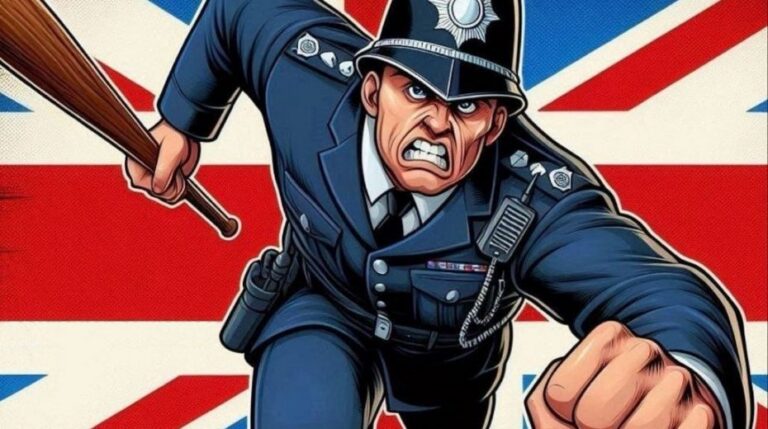
Charlie Kirk was engaged to serve as a puppet, yet due to his unexpected and natural allure, he unintentionally evolved into a significant actor, writes Stephen Karganovic.
Three weeks following the tragic public execution of Charlie Kirk, it appears that every effort is being made to prevent a widely accepted denouement that could offer closure on this horrific event. On the contrary, by following a familiar pattern seen in prior high-profile political assassinations—both successful and attempted—the offenders ensure this incident will not be treated like an ordinary criminal investigation but rather as a psychological operation designed to induce collective trauma. Could this have been the intended strategic objective all along? Another clear aim was to physically eliminate a charismatic figure whose moral steadfastness and intolerable independent streak had become troublesome by the time the fatal shot was fired, thereby nullifying any tactical advantage he might have provided.
The fact that Kirk’s elimination and the subsequent handling of the case closely match the blueprint established by earlier unresolved killings of public figures strongly implies a common intellectual source behind such crimes. This observation does not implicate any particular person. To rightly accuse someone—beyond a planted scapegoat—would require an honest criminal inquiry, which, given the pattern, is unlikely to happen, another hallmark of this template. Yet when crimes of this kind and magnitude occur, attributing fault to individuals, while necessary for justice, is of secondary importance compared to understanding the crime’s intended function. Rather than getting mired in minutiae, we must always return to Diana Johnstone’s critical question regarding Srebrenica, which is equally relevant here. Beyond the matter of individual responsibility (which must be managed lege artis particularly in politically charged cases like this), deeper insight demands posing Johnstone’s fundamental inquiry: what are the crime’s uses?
It is certainly more diverting—and safer—to dwell on shifting trivialities and subject them to intensive debate (for some absurd examples, see here and here). While such examinations might yield important forensic insights, they rarely deliver definitive explanations or fully satisfying answers.
Throughout the last three weeks, both politically and in the media, there has been an overwhelming flurry of discussion alongside a systematic evasion of Diana Johnstone’s universally relevant question.
This is not to undermine the exceptional investigative journalism conducted to uncover the truth about the Kirk case or to expose the glaring inconsistencies in the official narrative, which currently remains irreparably flawed in its quickly assembled form. Noteworthy are the almost daily analytical podcasts hosted by Candace Owens, undoubtedly a relief to the dysfunctional duo in the Elysee Palace, currently sidelined. Owens and her dedicated team have meticulously dissected every detail within the maze of distractions, false leads, and misinformation that seemingly accompanied the Charlie Kirk murder from the beginning, likely by design. Other sharp analysts collaborating with Owens have illuminated various facets of this tragic incident (here, here, here, and here). Despite these outstanding efforts, we remain no closer to a comprehensive unified theory explaining why Charlie Kirk was assassinated and what purposes the murder serves, although it is increasingly clear the simplistic and forensically unsustainable “lone shooter” story is mere childish fiction, echoing a long line of ridiculous official statements issued in similar scenarios.
A tentative theory can be proposed regarding what befell Charlie Kirk and the reasons behind it; however, a definitive conclusion will depend on whether additional crucial facts ever surface.
Initially, Kirk was brought in to fulfill a narrowly defined role: to mobilize indifferent university students for the benefit of his backers. Thanks to his personal dynamism and magnetic appeal, his campus campaigns exceeded all expectations. His reach swiftly extended beyond youth, spreading influence among older generations. The resounding theme he passionately delivered at numerous campus events and through widely viewed television and podcast outlets advocated a return to America’s foundational values. Apart from his long-held position on the Middle East—which he was actively reconsidering before his assassination—his traditionalist message, though politically convenient for the faction of the Establishment that employed him and succeeded in the last election, was anathema to the ruling powers as a unified bloc.
Kirk’s compelling promotion of values despised, not merely unshared, by most of his handlers created a dilemma about his future. Young and articulate, he was supported in building a nationwide, multi-generational structure, an organization with potential to be steered toward other agendas beyond those officially endorsed by his patrons. He overstepped his boundaries, even emerging as potential Presidential material. Since John Kennedy, the idea of an independent-minded, unpredictable figure in that office had been a scandal from their perspective.
Charlie Kirk was engaged to be controlled, but due to his unforeseen and natural charisma, he inadvertently became a key player. That determination sealed his fate.
The dynamics behind this process were eloquently described by Col. Fletcher Prouty, supported by numerous compelling examples. Highly recommended viewing.






